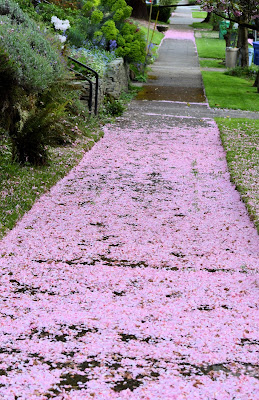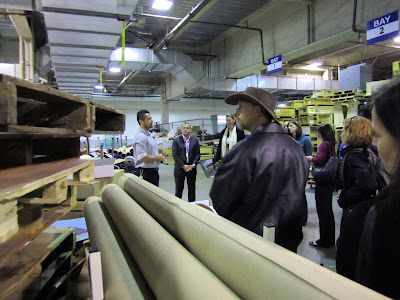Think it doesn't matter where you source your event promotional items from? Ask the US Olympic Committee and think again. When word leaked out about the uniforms being "Made in China," the media world went crazy with bad publicity. My Google search today revealed pages upon pages of links to stories about how thoughtless it was of the Committee.
A little bit of due diligence by this esteemed group could have resulted in a wonderful news story about how "Made in America" products were being worn by the athletes winning medals for our country. Imagine the photo op of the seamstress watching the Olympics and rooting for the individual wearing the uniform she lovingly sewed. Instead, look at the firestorm of media that has resulted.
The Canadian Olympic Committee apparently took these steps and are able to report 85% of their uniforms were made in their country. They are already winners in their nation's eyes.
Don't think for a minute the promotional products we select for the our events won't have a backlash. Maybe not today and maybe not to this degree, but soon and it will impact on your organization's image. Count on it.
Friday, July 27, 2012
Tuesday, July 24, 2012
Contagious Enthusiasm
"We just can't help it. Once we got started on green practices, we keep asking ourselves and each other, 'What's next?', 'What else can we do?'" Grace Lial, Director of Guest Services at the DoubleTree by Hilton - Portland, was simply beaming as she described their latest ideas. Grace wasn't telling us this because it is the party line or for promotional reasons, but because she was so very proud of their ingenuity and accomplishments she wanted to share them with us.
What started as an impromptu visit to the property turned into a great learning opportunity for our new employee at MeetGreen as well as our seasoned planners. Sometimes we think we have seen it all, but in less than 30 minutes, we had to admit we haven't. Here are some of the innovative ideas we discovered during our short visit:
In-room composting. Guests are now able to compost right in their sleeping rooms and avoid putting items into their waste or recycling bins. Housekeepers empty and clean these bins during their regular rounds several times daily, so smell is not a problem.
Digital newspapers. After much discussion about what to do with all of the unread USA Today newspapers stacking up outside guests doors, the Portland property worked with the brand office to find a solution. In turn, by this office enrolling the publisher to find a solution, the hotel now has a system to provide digital versions of the news for guests. This solution has been adopted across the chain, thanks to the Portland property.
Digital mass transit monitor. The property being on a light-rail line is great, but it is even better when the monitor next to the front door tells you what bus/rail lines are available in the vicinity and when the next scheduled stop will be. You can stand inside, out of the rain, and learn that the next train headed for the convention center and downtown will be arriving in 18 minutes. The monitor is synched up with the Tri-Met system for constant updating.
These initiatives were new to me in my travels and I was impressed. What really impressed me, however, was the pride and excitement of the employees in telling their sustainable story. A story they are living, breathing and writing each day.
What started as an impromptu visit to the property turned into a great learning opportunity for our new employee at MeetGreen as well as our seasoned planners. Sometimes we think we have seen it all, but in less than 30 minutes, we had to admit we haven't. Here are some of the innovative ideas we discovered during our short visit:
In-room composting. Guests are now able to compost right in their sleeping rooms and avoid putting items into their waste or recycling bins. Housekeepers empty and clean these bins during their regular rounds several times daily, so smell is not a problem.
Digital newspapers. After much discussion about what to do with all of the unread USA Today newspapers stacking up outside guests doors, the Portland property worked with the brand office to find a solution. In turn, by this office enrolling the publisher to find a solution, the hotel now has a system to provide digital versions of the news for guests. This solution has been adopted across the chain, thanks to the Portland property.
Digital mass transit monitor. The property being on a light-rail line is great, but it is even better when the monitor next to the front door tells you what bus/rail lines are available in the vicinity and when the next scheduled stop will be. You can stand inside, out of the rain, and learn that the next train headed for the convention center and downtown will be arriving in 18 minutes. The monitor is synched up with the Tri-Met system for constant updating.
These initiatives were new to me in my travels and I was impressed. What really impressed me, however, was the pride and excitement of the employees in telling their sustainable story. A story they are living, breathing and writing each day.
Sunday, July 15, 2012
Community Sole
It was a beautiful weekend in Portland, so when I parked my car after work on Friday, I decided to leave it there and walk for the next few days. My weekend was a busy one, but walk I did. Here's a list of all the places I visited on foot within 1/2 mile of my house:
- Farmers Market
- Movie
- Thrift Store
- Antique Mall
- Restaurants (twice)
- Grocery Store
- Pet Store
- Book Store
- Pharmacy
- Post Office
- Bank (thanks to my other destinations)
Note: I took this photo of my street because I loved the carpet of blossoms on the sidewalk. You can tell it's Portland, the line of recycling bins of to the right of the pink carpet give it away.
Tuesday, July 10, 2012
Case in Point
Yesterday I posted a blog about how our industry should stop fighting so hard to prove that face-to-face is the only way to meet and use that energy to embrace new technologies and transform the meeting experience. Today I want to give you an example why I think it is so vital.
We recently began work with a new client who's membership base is located in small, rural areas. They hold an annual event to bring together their membership for networking, education and thought leadership. Only a portion of the group is able to attend due to economic considerations as well as travel. The portion that isn't able to attend has no way to connect and will only hear about the event second hand.
This year, thanks to the advancement in technology, the association will provide a virtual component by streaming general sessions, online forums, and other social media outlets. The charge for attending virtually will be far less than the cost of travel to the conference and is expected to increase attendance at the event. More revenue. More members connecting with other members. More visibility for the organization. More sponsorship opportunities.
We are in the logistical phase of production now and when this event is over and the numbers are in, I will post a full case study complete with testimonials on the participant experience.
Twenty-five years ago, when I was a corporate meeting planner for a national healthcare organization specializing in small, rural hospitals, this scenario would have been a dream come true. We were continuously striving to find a way to connect everyone in the organization although only a portion were able to attend the annual conference due to economic and human resource constraints. In these small hospitals, it was very difficult to have the entire management staff away at a conference at the same time, so several key team members had to stay at the facility. Technology and social media would have been a welcome solution.
We as meeting professionals and industry suppliers have a rare opportunity. At no other time in history have such incredible tools been available to us. Now it is our turn to use our knowledge and skills to reinvent how people connect and learn.
We recently began work with a new client who's membership base is located in small, rural areas. They hold an annual event to bring together their membership for networking, education and thought leadership. Only a portion of the group is able to attend due to economic considerations as well as travel. The portion that isn't able to attend has no way to connect and will only hear about the event second hand.
This year, thanks to the advancement in technology, the association will provide a virtual component by streaming general sessions, online forums, and other social media outlets. The charge for attending virtually will be far less than the cost of travel to the conference and is expected to increase attendance at the event. More revenue. More members connecting with other members. More visibility for the organization. More sponsorship opportunities.
We are in the logistical phase of production now and when this event is over and the numbers are in, I will post a full case study complete with testimonials on the participant experience.
Twenty-five years ago, when I was a corporate meeting planner for a national healthcare organization specializing in small, rural hospitals, this scenario would have been a dream come true. We were continuously striving to find a way to connect everyone in the organization although only a portion were able to attend the annual conference due to economic and human resource constraints. In these small hospitals, it was very difficult to have the entire management staff away at a conference at the same time, so several key team members had to stay at the facility. Technology and social media would have been a welcome solution.
We as meeting professionals and industry suppliers have a rare opportunity. At no other time in history have such incredible tools been available to us. Now it is our turn to use our knowledge and skills to reinvent how people connect and learn.
Monday, July 9, 2012
"Social Media Will Not Stop Face-to-Face Meetings"
You can imagine that headline got my attention. Social media stop face-to-face meetings? Of course not, I said to myself and went on to read the article. In a consultation of 1.75 million people, Airbus found that 60% of the respondents believe that social media will not stop face-to-face meetings. It also found that 96% of those same people believe aircraft will have to be more"'eco-efficient." Not surprisingly, nearly half believe door-to-door travel will become more "stressful" in the future.
Airbus and the entire hospitality industry have tough mandates moving forward, keep people meeting in person, eco-efficiently and stress free while doing battle with social media for our attention. Perhaps, instead of always viewing social media, virtual meetings, and technology as the Evil Enemy, it is time to embrace the new reality and acknowledge there are enough slices of the pie for everyone.
At the risk of committing professional suicide, may I make a suggestion?
As an industry, let's stop acting like this is a battle that requires campaigns, buses, and lobbying to keep people traveling for travel's sake. It is scarcity thinking and won't help our industry in the long run. Instead, we should all be figuring out how to help people meet in a way that connects them without undue stress on their bodies, minds and planet in whatever form it takes.
After all, isn't that what hospitality is all about?
Airbus and the entire hospitality industry have tough mandates moving forward, keep people meeting in person, eco-efficiently and stress free while doing battle with social media for our attention. Perhaps, instead of always viewing social media, virtual meetings, and technology as the Evil Enemy, it is time to embrace the new reality and acknowledge there are enough slices of the pie for everyone.
At the risk of committing professional suicide, may I make a suggestion?
- Travel when it is REALLY important for the human, physical connection--it is vital.
- Use technology to save both the planet and our stress levels whenever possible, whether that be in more efficient planes, more comfortable space or connecting via the internet. Sometimes the connection we make with our family by being in town to cheer at a child's game is more important than the connection made by attending a meeting where your physical participation is not essential.
- Take into account the personal characteristics (introvert/extrovert) of the group when determining whether face-to-face connection is essential for the outcome.
As an industry, let's stop acting like this is a battle that requires campaigns, buses, and lobbying to keep people traveling for travel's sake. It is scarcity thinking and won't help our industry in the long run. Instead, we should all be figuring out how to help people meet in a way that connects them without undue stress on their bodies, minds and planet in whatever form it takes.
After all, isn't that what hospitality is all about?
Tuesday, July 3, 2012
What's Behind Door #1?
It is time to choose a meeting venue for your upcoming event. You have found a destination with a walkable community, mass transit from the airport and a selection of green vendors. You have narrowed the field by looking at rates, dates and space.
During the proposal process, you were diligent about asking for recycling, composting, local and organic food and donation programs and the answer has been, "Yes." Now during the site inspection, ask to see this is actually happening. Here are the top three areas we always visit:
The Kitchen. Do you see recycling/composting bins being used? Are the garbage cans full of things that should be in these bins? Do the food labels show the product is local? Organic? Is the seafood from a sustainable source? Are the condiments in bulk containers or is there a walk-in cooler full of little packets? Where do they hold food for donation?
Housekeeping. What kind of cleaning products are they using? Where are the little, partially-used amenity bottles going? Is the in-room trash being sorted for recycling? How do they implement their towel and sheet reuse program?
The Loading Dock. Usually this is the home of the recycling containers, garbage dumpster, composting bins, and cardboard compactors. Seeing the set up and operation will tell you a lot. It doesn't take long to see if it is actually being used. I was on one inspection where the tour guide was telling me all about the recycling efforts when a houseman pushed a huge gray bin up to the garbage dumpster and put bags of recyclable materials straight into the dumpster. You could tell it was "business as usual" while the recycling containers stood by empty.
You can always add to your tour if the venue touts things like an herb garden, solar panels or green roof. See for yourself. Lately, I have been finding sustainable practices pretty much as advertised over the past year with a few exceptions.
When back of house, I also find the champions, the unsung heroes of sustainability Those folks we very rarely see doing the real work of making sure our complicated waste stream gets to the right place and anything that can be reused finds a home. Take time to thank them for the important role they play--none of this would be possible without them!
During the proposal process, you were diligent about asking for recycling, composting, local and organic food and donation programs and the answer has been, "Yes." Now during the site inspection, ask to see this is actually happening. Here are the top three areas we always visit:
The Kitchen. Do you see recycling/composting bins being used? Are the garbage cans full of things that should be in these bins? Do the food labels show the product is local? Organic? Is the seafood from a sustainable source? Are the condiments in bulk containers or is there a walk-in cooler full of little packets? Where do they hold food for donation?
Housekeeping. What kind of cleaning products are they using? Where are the little, partially-used amenity bottles going? Is the in-room trash being sorted for recycling? How do they implement their towel and sheet reuse program?
The Loading Dock. Usually this is the home of the recycling containers, garbage dumpster, composting bins, and cardboard compactors. Seeing the set up and operation will tell you a lot. It doesn't take long to see if it is actually being used. I was on one inspection where the tour guide was telling me all about the recycling efforts when a houseman pushed a huge gray bin up to the garbage dumpster and put bags of recyclable materials straight into the dumpster. You could tell it was "business as usual" while the recycling containers stood by empty.
You can always add to your tour if the venue touts things like an herb garden, solar panels or green roof. See for yourself. Lately, I have been finding sustainable practices pretty much as advertised over the past year with a few exceptions.
When back of house, I also find the champions, the unsung heroes of sustainability Those folks we very rarely see doing the real work of making sure our complicated waste stream gets to the right place and anything that can be reused finds a home. Take time to thank them for the important role they play--none of this would be possible without them!
Subscribe to:
Posts (Atom)




